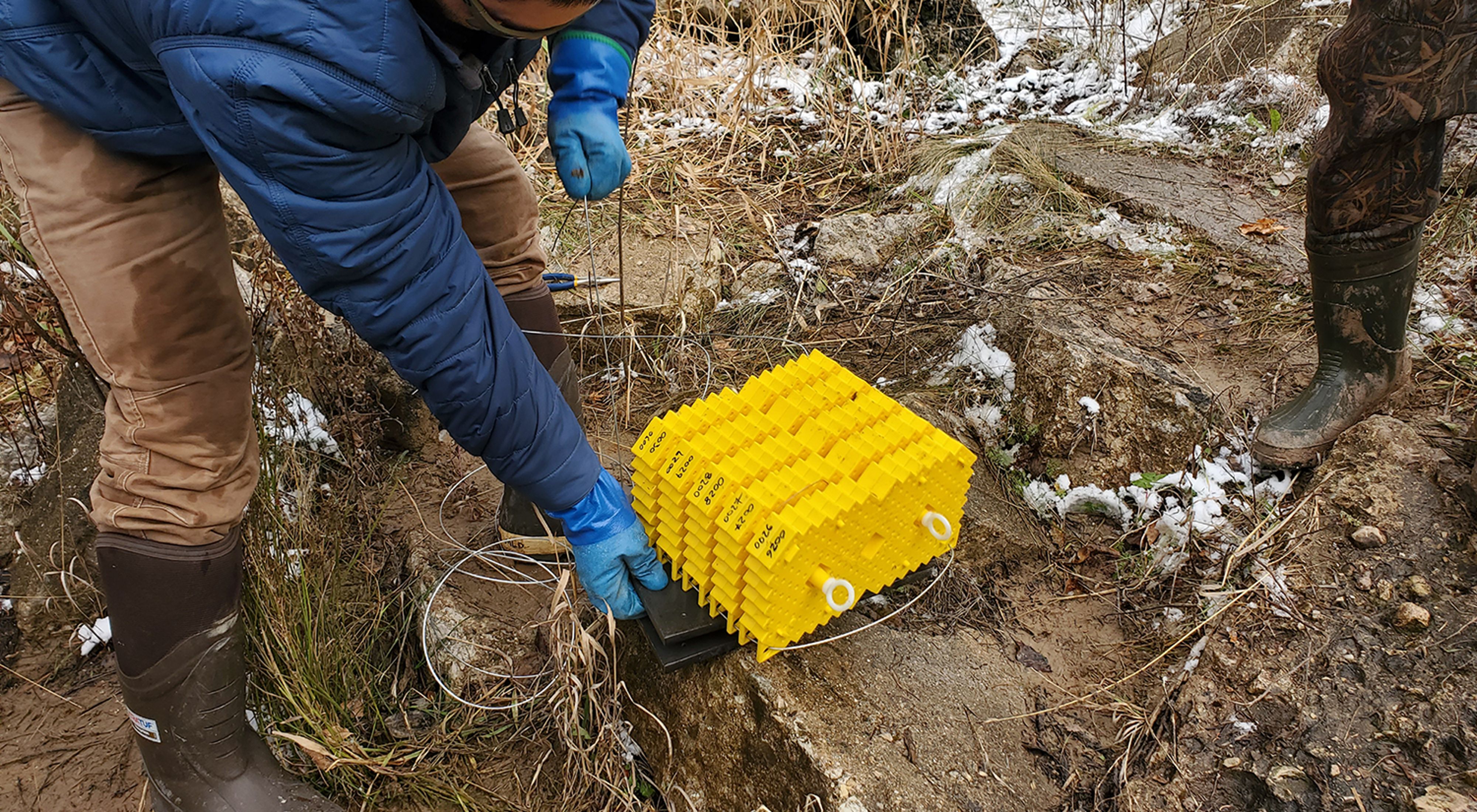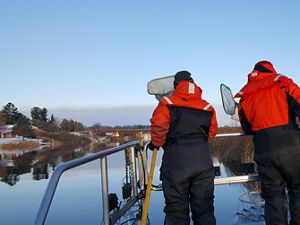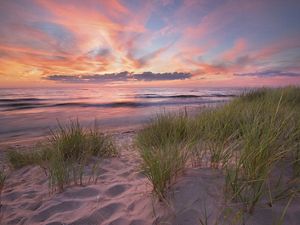TNC, Tribal Partners and MDNR to Gauge Success of Experimental Whitefish River Stocking this Spring
Sampling begins this month after 100,000 whitefish eggs were placed in the Carp River last November.
Media Contacts
-
Ryan Hermes
TNC
Phone: 517-999-7745
Email: ryan.hermes@tnc.org
ST. IGNACE, Mich. – The Nature Conservancy in Michigan (TNC), in partnership with the Sault Tribe of Chippewa Indians, Little Traverse Bay Band of Odawa Indians and Michigan Department of Natural Resources (MDNR), are now sampling along the Carp River in Mackinac County in the Upper Peninsula. In November of 2022, 100,000 whitefish eggs in incubators were placed in the Carp River with the goal of developing an approach to re-establishing Great Lakes whitefish populations that migrate into rivers to spawn.
“Lake whitefish have been on the decline for over a decade and one of the main culprits is invasive quagga mussels filtering nutrients from the Great Lakes causing reduced zooplankton densities, which are the primary food source for young whitefish,” said Jason Smith, assessment biologist with the Sault Tribe of Chippewa Indians. “It is our hope that by re-establishing whitefish in rivers they’ll have greater access to more zooplankton when they’re young and have a greater chance of surviving into adulthood. Then, when it’s time for these fish to spawn again they’ll hopefully return to the same river to lay their eggs.”
Quote: Jason Smith
Then, when it’s time for these fish to spawn again they’ll hopefully return to the same river to lay their eggs.
The fertilized eggs were placed in incubators just after fertilization, which were then secured within the river. They’ve been resting under the frigid river waters for the last several months but will hatch soon and begin their journey downstream to Lake Huron.
“This approach is experimental and we’re in the very early stages, but we believe it has promise,” said Dave Clapp, station manager of the Charlevoix Fisheries Research Station and research biologist for the MDNR. “We are working to develop the best techniques for holding eggs in a river over the winter, so they survive and successfully drift downstream to nursery habitat in the Great Lakes. However, we won’t truly know how successful this is until fish return as adults to spawn.”
Quote: Dave Clapp
...we won’t truly know how successful this is until fish return as adults to spawn.
“The concept of imprinting fish to a specific river is not new, but we are applying it to a new situation,” said Kris Dey, hatchery manager for the Little Traverse Bay Bands of Odawa Indians. “By introducing whitefish as eggs, we are hopeful an imprinting mechanism will kick in right after hatch and help lead the adult fish back to the rivers they hatched from.”
“Everyone loves a good comeback story, and this experimental river stocking might just be the ticket to jumpstart the lake whitefish comeback in the Great Lakes,” said Matt Herbert, senior conservation scientist for TNC in Michigan. “Lake whitefish are the most important commercial fishery in the Great Lakes and are such an important part of the fabric of our state. We’re glad to be working with our tribal partners and the Michigan Department of Natural Resources to try and boost the population of whitefish in Michigan.”
Quote: Matt Herbert
Everyone loves a good comeback story, and this experimental river stocking might just be the ticket to jumpstart the lake whitefish comeback in the Great Lakes.
While whitefish river spawning largely disappeared from the Great Lakes by the early 1900s, in recent years whitefish have begun spawning again in several rivers that flow into Green Bay in Wisconsin and Michigan. In fact, whitefish are doing better than ever in Green Bay, and the river-spawning runs are a big reason why. Right now, a large amount of the whitefish produced in Green Bay are coming from rivers.
“This isn’t the first-time invasive species have done damage to our whitefish population and it probably won’t be the last,” said Kevin Donner, Great Lakes fisheries manager for the Little Traverse Bay Band of Odawa Indians. “But if we can build stronger whitefish populations by encouraging river spawning, we can protect whitefish populations against future challenges and strengthen tribal fisheries in the process.”
Quote: Kevin Donner
...if we can build stronger whitefish populations by encouraging river spawning, we can protect whitefish populations against future challenges and strengthen tribal fisheries in the process.
For the past five years, this same group of scientists have been surveying rivers in Lake Michigan tributaries and rivers flowing into northern Lake Huron to see if whitefish were already spawning in rivers outside of Green Bay. To date the team has surveyed for whitefish in eighteen different tributary rivers and have only documented whitefish in Green Bay tributaries.
“The increase in whitefish spawning in Green Bay over the last couple of decades shows that river spawning can be successful and a boon to the whitefish population,” Herbert said. “If river-spawning whitefish can rebuild whitefish stocks in Green Bay, we are hopeful it can work elsewhere in the Great Lakes as well.”
The Nature Conservancy is a global conservation organization dedicated to conserving the lands and waters on which all life depends. Guided by science, we create innovative, on-the-ground solutions to our world’s toughest challenges so that nature and people can thrive together. We are tackling climate change, conserving lands, waters and oceans at an unprecedented scale, providing food and water sustainably and helping make cities more sustainable. The Nature Conservancy is working to make a lasting difference around the world in 81 countries and territories (40 by direct conservation impact and 41 through partners) through a collaborative approach that engages local communities, governments, the private sector, and other partners. To learn more, visit nature.org or follow @nature_press on X.



